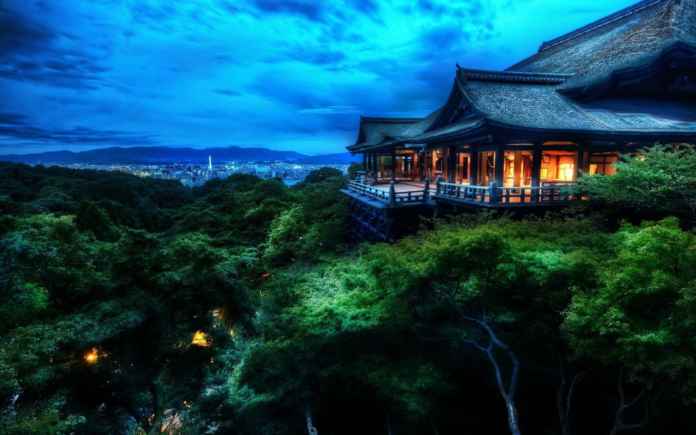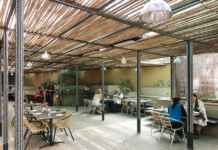Its has been the former capital of Japan for over a millennium. Kyoto is Japan’s 7th largest city. It is the storehouse of Japan’s traditional culture and the stage on which much of Japanese history was played out. Kyoto is a such a kind of city that everyone should see it once in their lifetime. Kyoto is nestled among the mountains of Western Honshu. Over the centuries, Kyoto was destroyed by many wars and fires, but due to its historic value, the city was dropped from the list of target cities for the atomic bomb and spared from air raids during World War II. Countless temples, shrines and other historically priceless structures survive in the city today.
In first impression of this city is of the urban sprawl of central Kyoto, around the ultra-modern glass-and-steel train station which seems like a modern city steeped in tradition colliding with the modern world. But trust me it has much to offer. All you have to do is to discover Kyoto’s hidden beauty in the temples and parks which ring the city center.
Attractions of Kyoto
Heritage sites of Kyoto: You know what?? In 1994, 17 historic sites were inscribed on UNESCO’s World Heritage List under the group designation Historic Monuments of Ancient Kyoto. Fourteen of the listed sites are in Kyoto itself. Tourists probably need to plan an itinerary in advance in order to visit all these wonderful sites as many as possible.
Do visit these Heritage sites of Kyoto:
- Kinkaku-ji
- Ryōan-ji
- Ninna-ji
- Kōzan-ji
- Shimogamo Shrine
- Kamigamo Shrine
- Nijō Castle,
- Nishi Hongan-ji
- Tō-ji
- Kiyomizu-dera
- Ginkaku-ji
- Tenryū-ji
- Koke-dera
- Daigo-ji
Cherry blossom: A cherry blossom is the flower of any of several trees of genus Prunus, particularly the Japanese Cherry, Prunus serrulata, which is sometimes called sakura after the Japanese. Kyoto is arguably the most well known place in the country to view cherry blossoms, and there is certainly no lack of options. Eastern Kyoto is particularly popular during the cherry blossom season. A walk from Nanzen-ji to Ginkaku-ji along the Philosopher’s Path, lined with cherry trees, is enjoyable, as there are a variety of temples and shrines to stop at along the way.
Imperial Villas & Palaces: The Imperial Household Agency maintains the ancient villas and palaces of Kyoto, Japan. These old households are worth a visit. There are four main imperial palaces in Kyoto. All four of these sites are open to the public by reservation through the Imperial Household Agency. Admission is free and English guides are available. Please note that advanced applications first become available on the first day of the month, three months in advance of the applicant’s preferred touring month.
Thrills and Fun
Walk Tour: Start your journey in Kyoto, seeing the former imperial capital and repositories of much of Japan’s cultural heritage. Visits to grand temples and shrines will be balanced with walking in the Nara plain south of Kyoto.
Meditation: Meditation is a traditional culture in Japan. Buddhist meditation sessions are one of the most popular of these activities. But reservations are necessary.
How to reach there?
Airlines
Kyoto is in Japan so first of all you have to reach there. The largest international gateway of Japan is Narita Airport (New Tokyo International Airport). From Narita Airport you can follow this route (just an example):
- Narita -> One hour and ten minutes of flight -> Itami Airport (Osaka Airport)
- Itami Airport -> One hour of Limousine Bus -> Kyoto Station
Kyoto does not have its own airport, but rather is served by Osaka’s two airports. Overseas travelers can fly into Kansai International Airport and then get a train to Kyoto.
Located near Osaka, Itami Airport is Kansai’s largest domestic airport. Travelers flying into Kyoto from other areas in Japan will most likely arrive here.
The best and fastest way to get to Kyoto from the airport is to buy a one-day JR West Kansai Area Pass and take the Haruka Limited Express (non-reserved tickets only).
How to roam around?
Kyoto Sightseeing Card: This card can be purchased as a one-day (¥ 1200/Children: ¥ 600) or two-day pass (¥ 2000/¥ 1000). It can be used for unlimited travel on the subway and city buses as well as a part of the Kyoto bus route. The two-day pass has to be used on two consecutive days.
Traffica Kyoto Card: It is a stored-value card in denominations of ¥ 1000 or ¥ 3000. It can be conveniently used up to face value on all subways and buses by simply sliding it through the ticket gate. They offer a 10% bonus value.
Trains:
Trains are a useful mode of transport in Kyoto. Although the lines are run independently and prices vary slightly between them, transfers can be purchased at most of the ticket machines.
Subways:
There are only two subway lines in the city serving a small part of the city. For north-south you have to take Karasuma Line and for east-west Tozai Line is running which links up with it near the city center. Both lines are useful for travelling in the city center but not really suitable for temple-hopping. A one-day pass for the subway costs ¥ 600.
Buses:
Green-and-white Kyoto City Buses travel within the city, and are the most useful for visitors. The bus network is the only practical way of reaching some attractions, particularly those in north-western Kyoto. Unlike most Japanese buses, Kyoto City Buses have announcements and electronic signs in English.
Legal Cautions:
Japan has very strict laws regarding the importation and possession of firearms and other weapons. Persons bringing a firearm or sword into Japan (including target and trophy pistols, air guns, some pocket knives, and even Japanese-origin swords) may have these items confiscated by Japanese customs authorities and may be arrested, prosecuted, and deported or jailed.
Overstaying your visa or working illegally may lead to fines of several thousands of dollars, and in some cases, re-entry bans can be as long as ten years or indefinitely for drug offenders.
Penalties for possessing, using, or trafficking in illegal drugs, including marijuana, are severe, and convicted offenders can expect long jail sentences and fines.

















